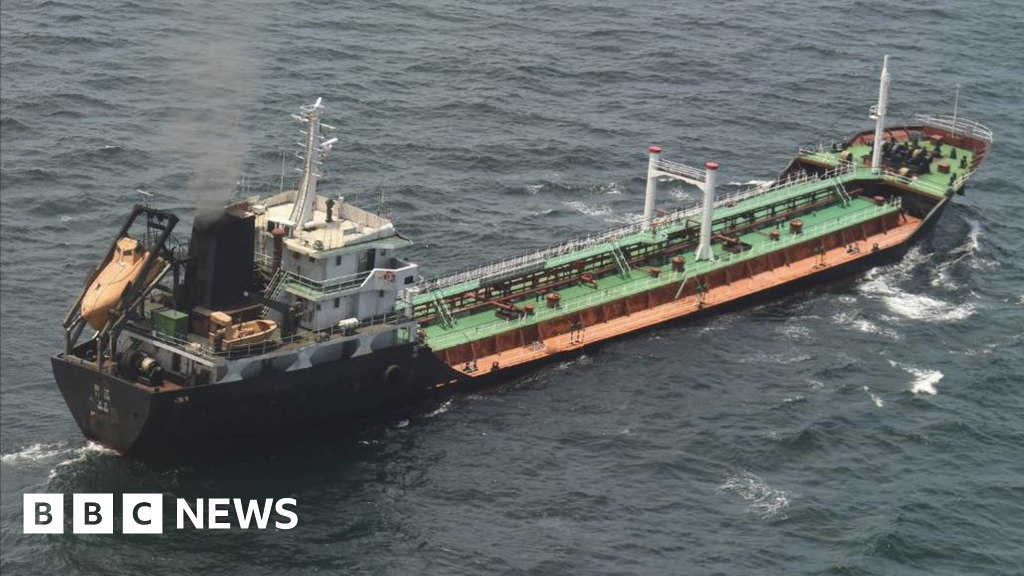Louis-Serge Parent lived about 100 metres from the bar Musi-Café in Lac-Mégantic, Que., which was at the epicentre of the damage after an oil-laden smashed train into the lakeside town in 2013, igniting an inferno. He still vividly remembers seeing the orange flames.
He says the trauma of that day left him feeling like a “zombie.”
Forty-seven people were killed and 26 children were left orphans. Thirty people died at Musi-Café alone. The derailment spilled more than six million litres of crude oil and prompted a series of safety investigations, reviews, criminal and civil lawsuits.
A decade later, Parent, 77, says Canadian rail safety is no better now than it was then.
“Not at all. It’s the same,” he said. “We are faced with a sense of helplessness.… We have to fight.”
Many affected by the Quebec disaster watched the news in horror earlier this month when an Ohio town was rocked by a toxic train derailment.
On Feb. 3. a Norfolk Southern train carrying hazardous materials derailed in East Palestine. The explosion and efforts at clean up ended up belching a dark plume of chemicals into the air, leaving nearby creeks with a sickening rainbow sheen, and leaving as-yet-unmeasured environmental fallout.
The U.S. National Transportation Safety Board chair Jennifer Homendy confirmed the cause of the Ohio crash was an overheated wheel bearing, which track sensors caught too late. She said the crew couldn’t stop the derailment that released hazardous material from up to 11 cars.
U.S. safety officials are demanding to know why safety checks failed. These questions have been asked before in Canada and federal authorities introduced a slew of changes after what happened in Lac-Mégantic. Even so, rail safety experts warn that the risk of rail disaster in Canada is still too high.
Deadliest crash in 150 years changed little
The Lac-Mégantic tragedy was Canada’s deadliest rail crash in more than 150 years, according to rail safety consultant Ian Naish, former director of rail accident investigations with the Transportation Safety Board.
He says the safety measures introduced since the disaster have been “marginal.”
Bruce Campbell, an adjunct professor in environmental studies at York University in Toronto who wrote the book The Lac-Mégantic Rail Disaster: Public Betrayal, Justice Denied, agrees.
“The window [is] still open for a Lac-Megantic kind of disaster,” he said.
Campbell says despite repeated calls for a special inquiry after the 2013 tragedy, none was ever held. Accident investigators attributed the disaster to multiple causes, principally leaving a train unattended on a main line, a failure to set enough hand brakes and a lack of a backup safety mechanism.
And in a 2022 report, Canada’s Transportation Safety board found safety practices lacking and employees worked to the point of fatigue common at the Montreal, Main and Atlantic, the regional railway that ran the train that crashed in Quebec.
Campbell says rail industry lobbying has delayed critical safety changes.
“People living close to the rail tracks — whether it’s in Lac-Mégantic or whether it’s in the heart of Toronto or Vancouver — are still at risk,” he said.
Lawyers representing the families of the dead point out that the train rolled through Minneapolis, Milwaukee, Chicago, Detroit, Toronto and Montreal, before hitting Lac-Mégantic.
In 2020, some eight years after the Lac-Mégantic crash, the auditor general’s office warned that Transport Canada still had not done enough to prevent risks around the transport of dangerous goods.
“We found that the department could not demonstrate the extent to which its oversight activities have improved the railway companies’ compliance with regulations that mitigate key safety risks,” the audit team wrote.
Kathy Fox, chair of the Transportation Safety Board of Canada (TSB), has expressed disappointment that the rail industry has failed to make “physical” changes — such as better braking systems — to prevent runaway trains, as outlined in a 2022 report.
“Progress is being made, but it’s very, very slow,” she said . “I can’t say [Ohio] couldn’t happen here.”
4 accidents on average per year involve dangerous goods
Canada’s Transportation Safety Board reported 86 railway accidents involving dangerous goods in 2021, two of which involved cargo spills.
The TSB says over the past decade there’s been an average of about four accidents per year involving a release of dangerous goods. They include:
- Nov. 10, 1979: A freight train with several tanker cars full of dangerous chemicals derailed in Mississauga, Ont., causing a spectacular fireball and mass evacuation of more than 200,000 people.
- July 6, 2013: A train derailed in Lac-Mégantic, Que. killing 47 people in the worst rail disasters in Canadian history.
- Feb. 4, 2019: Three Calgary crewmen died when a grain train derailed near Field, B.C.
After the Lac-Mégantic disaster, a slew of regulatory changes by Transport Canada shored up safety rules and required railroads to provide emergency responders with data on dangerous goods being shipped through municipalities.
Tanker car models were improved to make them sturdier and less likely to rupture or spill if derailed. But Naish said a TSB investigation of a 2019 train derailment near Guernsey, Sask., illustrated how even the sturdier tanks ruptured and spilled at higher speeds.
“There was a lot of work done beefing up the tank cars, but all bets are off if they are going faster than 35 miles per hour,” Naish said.
WATCH | The frequency of train derailments in North America:
Allan Zarembski, director of the railway engineering and safety program at the University of Delaware, discusses how often trains derail in North America.
And he said that rail operators have failed to heed the TSB’s calls to add chemicals to explosive cargos to reduce their flammability, or to replace antiquated hand brakes with electric parking brakes.
Campbell says rail accidents and runaway trains were on the rise before the pandemic put a lull on trade, with main track derailments hitting rising year over year to spike in 2019. In 2021 a total of 16 derailments involved dangerous goods, according to TSB data.
The Railway Association of Canada, an industry lobby group, did not respond to CBC’s requests for an interview.
But it has insisted in the past that Canadian rail lines are safer than ever and the most cost effective.
“We’ve known for a long time that Canada’s freight railways are the safest in North America,” Marc Brazeau, the association’s president and CEO, said in a Feb. 13 release.

Railway industry needs checks
Railroad workers such as Fritz Edler of Railroad Workers United union, on the other hand, say rail lines across North America refuse to divulge what their cars are carrying to the public, and often ship dangerous goods directly through cities and suburbs.
“They don’t want you to know,” Edler told CBC News.
He pointed out that most spills or “releases” happen in remote locations. In 2005, a CN rail train derailed near Squamish, B.C., and spilled 40,000 litres of sodium hydroxide into the Cheakamus River from damaged railcars.
Allan Zarembski, director of the railway engineering and safety program at the University of Delaware, said the Ohio derailment was unfortunate but not typical. He says there are only about 10 to 20 hazardous chemical spills throughout North America each year.
“This was a nasty derailment. But the number of nasty derailments are fortunately few and far between,” said Zarembski.
“Am I gonna say there’s no risk? Well, no. I’m not going to say that.”
But he says rail lines are motivated to prevent devastating and expensive derailments.
Lac-Mégantic bore the highest cost.
Survivor Christian Lafontaine lost his brother and sister-in-law. He tattooed an image of his escape — the town’s iconic church framed by flames burning furiously into his right bicep.
A civil class-action lawsuit against the Canadian Pacific is also still ongoing. Survivors, the Quebec government and the insurance companies that compensated victims, have applied to the Quebec Court of Appeal to overturn a December trial decision that exonerated rail carriers for their role in the Lac-Mégantic tragedy. The train driver and two other rail employees were acquitted of criminal negligence in the case in 2018.
Joel Rochon, lead counsel for the class action plaintiffs, believes there will be more accidents and spills unless the industry changes its culture and safety standards.
“The railway industry, in its current state, cannot be trusted to police itself, and requires active government regulation and intervention…The railway industry needs to abandon its archaic, siloed and paper-based approach to risk management, and recognize that safety is everyone’s responsibility,” Rochon wrote to CBC on Feb. 27.











